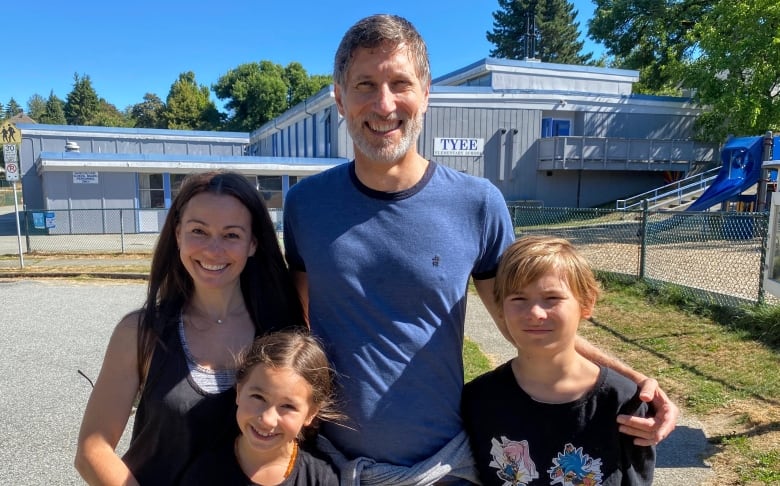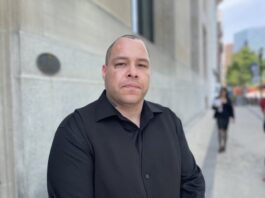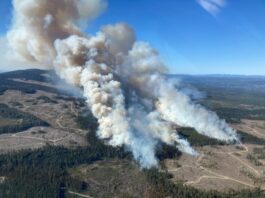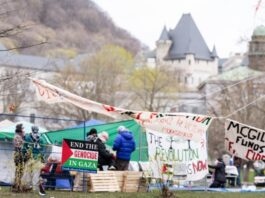
After attending classes virtually during the pandemic, Yellowknife student Riley Oldford felt this fall was the right time to return to school in person.
While his experience learning from home was “a pretty good one overall,” the high school senior noted that being back has meant he’s catching up with friends. For more than two years, they haven’t had many face-to-face meet-ups beyond a few summertime gatherings or the rare sledge hockey game.
“If I were to get COVID, there’s a much higher chance that I’d be at risk to be hospitalized or in intensive care,” said the Grade 12 student, who has cerebral palsy and chronic lung disease. “I’ve been trying to avoid getting it altogether, so I don’t have to find out what could happen.”
With few or no COVID-19 measures left in K-12 settings and a renewed focus on in-person rather than virtual learning, this back-to-school season has felt more like pre-pandemic times for many Canadians. Yet coronavirus concerns remain top-of-mind for students and families who are immunocompromised or have underlying medical conditions, with some experts saying they’ve been left to fend for themselves.
Prior to COVID-19, Oldford had developed some basic strategies for getting through his school day. He’s no stranger to hand sanitizer, for instance, and as someone who uses a walker and a wheelchair for mobility, he avoids crowds when moving between classes.
He’s since added a few more. This fall, he’s wearing a K95 or similar respirator at school and anywhere in public. Teachers help seat him as far as possible from his classmates. At lunch, he seeks vacant rooms no one’s been in, so he can eat there alone.
“[Before] I never really worried about what I’m breathing really or where I’m eating or who I’m sitting next to in class and how close they are,” he said. “I kind of just went about my day-to-day life.”
While Oldford says he understands officials lifting measures, he admits the drastic shift in many people’s behaviour feels odd.
“I’ve seen people that’ll wear masks, but otherwise they kind of act as COVID doesn’t exist. I guess maybe it doesn’t for them, but for some people it’s still a big issue.”

Mixed feelings about in-person return
Roger Haskett is also juggling mixed feelings — joy at in-person reunions, but also ongoing concern — as his kids returned to school in Vancouver this month. He described his family as “on the compromised list:” he has one kidney and a type of kidney disease.
“We understand that society is wanting to move on from COVID. Sadly, COVID hasn’t made a decision to move on from our world yet,” he said.
For most of the past few years, Haskett and his wife Jeni chose to homeschool their 11-year-old, Cody, and eight-year-old, Emme. Earlier this year, the kids were back in school; the family felt more comfortable after the kids received their COVID-19 vaccinations, the adults got boosted and students were still wearing masks.
Haskett thinks masking this fall is “a smart choice” for classrooms. He also believes improving ventilation should be a much bigger priority with the ongoing pandemic on top of fall allergies and the cold and flu season.
“We should clearly be making choices that help protect the most vulnerable in our society, but those are not the only reasons,” he said. Fewer people getting COVID “would be better for our world, our economy, our society, for everyone — not just the immunocompromised.”

Group at-risk ‘larger than you anticipate’
It isn’t always readily apparent who is immunocompromised or more at risk if they contract COVID-19 — the group is larger than we usually realize, according to Dr. Donald Vinh, an infectious disease specialist and medical microbiologist at the McGill University Health Centre in Montreal.
“It’s not somebody who’s wearing a scarlet letter on their forehead,” he said. The diverse group can range from, for instance, pregnant women to patients taking certain medications while awaiting a transplant to those with immune systems that don’t respond as well to vaccines to folks who are older in age.
“We have to remember that this pool of at-risk individuals is fluid, is larger than you anticipate and these are the people that we’re trying to protect with some of these [earlier public health] measures.”

Vinh expressed disappointment at what he calls the “global phenomenon” of repealing protective public health measures, since he thinks public health’s objective is to protect all members of the public.
“When there are measures that are simple and easy to use and effective — like masks and distancing and indoor ventilation that could prevent the acute life-threatening disease of COVID and also potentially the devastating long-term effects of COVID — it just boggles the mind that we are not actually using the tools at our disposal.”
Vinh pointed out that schools do have experience combining social responsibility with science and simple safety measures for the betterment of the overall community. For instance, peanut and tree nut products are typically prohibited to protect the fraction of students who have life-threatening allergies. If a case of lice is detected at school, he noted, that information along with how to check your kids and how to treat it gets sent home to those potentially exposed.
Now, with COVID, “we have deviated [from] our social responsibility and have forgotten the community approach and gone with the individual approach,” Vinh said.
‘We don’t exist on an island’
At the moment, the message that immunocompromised people are hearing is that “it is strictly up to them to protect themselves,” said bioethicist Maxwell Smith.
“We have good mechanisms through which people can protect themselves — we have vaccines, we have therapies, we have really well-fitting masks that can work to protect them — but we know and they know that the more that society does to put in universal protections, their protection simply is amplified.”
There have been harms, risks and costs to COVID-19 public health measures, noted Smith,’ an assistant professor in health sciences at Western University in London, Ont. Yet these need to be weighed “against the other harms that might occur if we don’t put those things in place.”
According to bioethicist and Western University professor Maxwell Smith, history has shown how initial backlash to some earlier public health or safety measures eventually transitioned into acceptance.
In the past, public health and safety measures such as seat belt laws or food safety requirements inspired a backlash when first introduced, he said. Over time, sentiment shifted in those cases to where we now consider them necessary and beneficial.
“Context changes the acceptability or perceived acceptance of these sorts of measures,” Smith said.
“Once we really frame what the risk is to those who are most vulnerable amongst us, it’s much easier to make the argument that we have duties to make sure that those people aren’t just cast aside.”
The solidarity with others the bioethicist noticed at the outset of the pandemic “has waned, for some people, to ‘if you are worried about this virus then you can take steps to protect yourself, but I have no responsibility to do so’ — and that [sentiment] is really just antithetical to living in a society,” Smith said.
“While we do have personal responsibilities and we do have our own risk tolerances, we don’t exist on an island.”
A bit more of that community-minded thinking is what Yellowknife high schooler Riley Oldfold is hoping for.
Whether you actually know someone at risk or not, “assume that there could be,” said the Grade 12 student. “If you’re feeling sick at all, don’t go somewhere that’s public… Wash your hands, be cautious. There could be someone that could get very ill from something you might not even know you have.”













